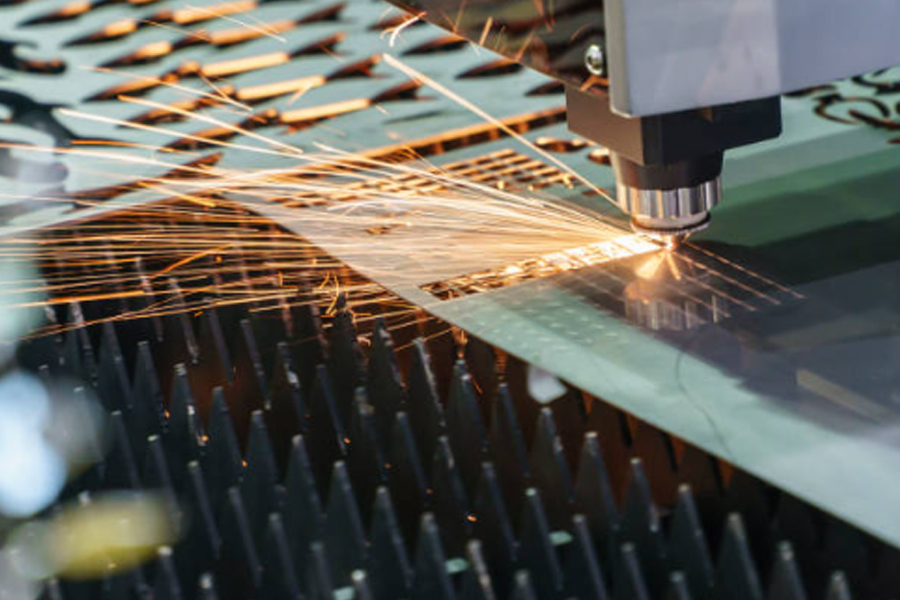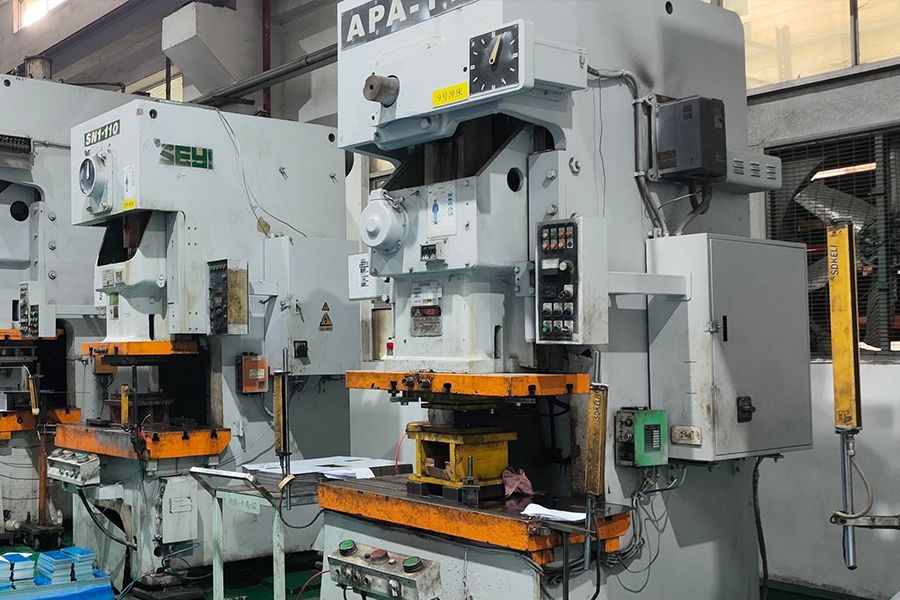
Metal Fab Secrets: ±0.2mm Precision Energy Storage Cabinets
Release time:2025-04-19 Click:8Summary
In the field of precision manufacturing for the new energy industry, ±0.2mm-level tolerance control has emerged as a core technical barrier for mass production of energy storage cabinets. This paper systematically analyzes the technological breakthrough paths of sheet metal processing plants in material forming, process collaboration, and detection closed loops, focusing on three key modules: wavelength stability regulation of laser cutting equipment, real-time deviation correction mechanisms of multi-dimensional intelligent detection algorithms, and a quality traceability system based on Statistical Process Control (SPC). Additionally, by addressing stress compensation models for stamping processes and dynamic adaptation schemes for high-precision positioning modules, it reveals the critical supporting factors for transitioning industrial-grade sheet metal parts from single-piece trial production to stable mass output, providing a systematic solution framework for precision bottlenecks in new energy equipment manufacturing.
Key Breakthroughs in Laser Cutting Precision
In the precision manufacturing system for energy storage cabinets, optimization of laser cutting process parameters forms the core pillar of precision control. By adopting high-power fiber laser generators exceeding 5kW, combined with servo drive systems featuring positioning accuracy of 0.003mm class, the width of the heat-affected zone at the cutting edge is reduced to within 0.15mm. In engineering practice, a thermal-mechanical coupling model based on finite element analysis predicts sheet deformation, and real-time closed-loop compensation algorithms stabilize X/Y axial positioning errors within a ±0.05mm threshold. Notably, multi-layer coating technology for optical lens groups reduces the beam divergence angle to 1.2mrad, and self-developed path-planning software effectively avoids staircase effects in traditional machining. Verified by third-party testing, this technical solution achieves a standard deviation of contour size deviation ≤0.12mm during continuous processing of 3mm-thick cold-rolled steel plates, establishing a micron-level reference surface for subsequent assembly processes.

Analysis of Intelligent Detection System Applications
To achieve the ±0.2mm precision target for mass production of energy storage cabinets, sheet metal processing plants have introduced 3D machine vision and multi-sensor fusion technologies to build a closed-loop detection network. The system captures contour features of stamped parts through high-frame-rate industrial cameras and uses laser ranging modules to compare real-time data with theoretical models, achieving error analysis accuracy of 0.05mm. Smart sorting devices deployed at critical workstations automatically determine out-of-tolerance workpieces based on deep learning algorithms, with a misjudgment rate controlled below 0.3%. Detection data is synchronized to the MES system, dynamically optimizing process parameters through SPC statistical process control modules to form a complete feedback chain from data collection to process improvement.
Path to Building a Quality Management System
The realization of the ±0.2mm precision target during mass production of energy storage cabinets relies on the systematic construction of a full-process quality management system. By establishing a PDCA (Plan-Do-Check-Act) cycle model, a closed-loop management system is formed from raw material incoming inspection to finished product shipment acceptance. SPC (Statistical Process Control) technology is introduced at key nodes to monitor and analyze trends in parameters such as laser cutting size fluctuations and stamping springback coefficients in real time, ensuring process stability is maintained at a Cpk ≥1.33 level.
Experience from the international automotive industry’s APQP (Advanced Product Quality Planning) indicates that quality management must be Pre to the mold development stage, eliminating structural risks through DFM (Design for Manufacturability) reviews. On this basis, a bidirectional data channel between the MES (Manufacturing Execution System) and QMS (Quality Management System) is established to achieve automatic correlation between process parameters and detection results. For the positioning module assembly link, a six-dimensional force sensing feedback device is used to improve the repeat positioning accuracy of tooling fixtures to ±0.05mm, providing a reference guarantee for final assembly.
Revealing the Stamping Process Optimization Plan
To achieve ±0.2mm-level forming precision for energy storage cabinet shells, the stamping process must break through traditional rough machining modes. By systematically analyzing material stress distribution characteristics, gradient buffer blanking technology is developed, and finite element simulation is used to optimize die clearance parameters, reducing local deformation to within 0.15mm. Based on the high dynamic response characteristics of servo presses, a three-stage variable-speed stamping strategy effectively suppresses metal springback effects. Experimental data shows that topology-optimized positioning modules achieve repeat positioning accuracy of ±0.05mm for workpieces. Combined with the SPC statistical process control system, the size fluctuation range of mass production batches is narrowed to 83% of the target value. This technical path successfully addresses the collaborative challenges of precision forming and tolerance control for new energy sheet metal parts.

Conclusion
Continuous breakthroughs in the limits of precision sheet metal manufacturing essentially reflect the concentrated embodiment of systemic integration capabilities. Achieving the ±0.2mm precision target relies not only on iterative upgrades of dynamic compensation algorithms in laser cutting equipment but also on the closed-loop feedback mechanism between detection systems and production data. As intelligent vision detection units correct machining errors in real time with 0.05mm resolution, the process database simultaneously accumulates millions of parameter samples, providing quantitative references for topology optimization of stamping dies. This multi-dimensional collaboration from the equipment layer to the system layer not only reconstructs the value chain of traditional sheet metal processing but also establishes a replicable precision manufacturing paradigm in the new energy equipment manufacturing field.
Frequently Asked Questions
Q1: How is ±0.2mm precision ensured in the laser cutting process?
A: High-precision positioning modules and multi-axis Linkage compensation algorithms dynamically correct cutting path deviations, combined with constant temperature environment control to reduce thermal deformation effects.
Q2: How does the intelligent detection system improve defect recognition efficiency?
A: Using multi-spectral imaging and deep learning algorithms, it compares 3D model data in real time, enabling 0.1mm-level dimensional error detection within 0.5 seconds.
Q3: How does the quality management system cover the entire production process?
A: Implementing SPC statistical process control, 43 quality nodes are set at critical Linkage,and the MES system enables data traceability and closed-loop optimization of process parameters.
Q4: What are the core improvements in the stamping process optimization plan?
A: Developing a composite die structure reduces traditional 12 processes to 5 and introduces servo presses for 0.01mm-level stamping depth control.
Q5: Is there a Continuous improvement in precision requirements for energy storage cabinets in the new energy industry?
A: With the popularization of liquid cooling systems and modular designs, industry standards have evolved from ±0.5mm to ±0.2mm, driving continuous process upgrades.